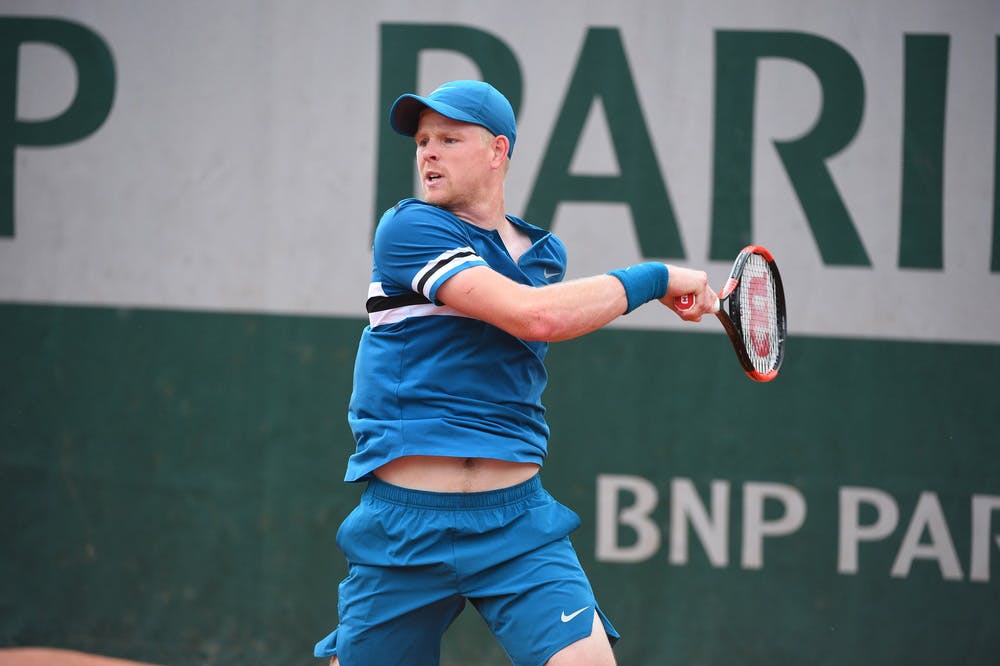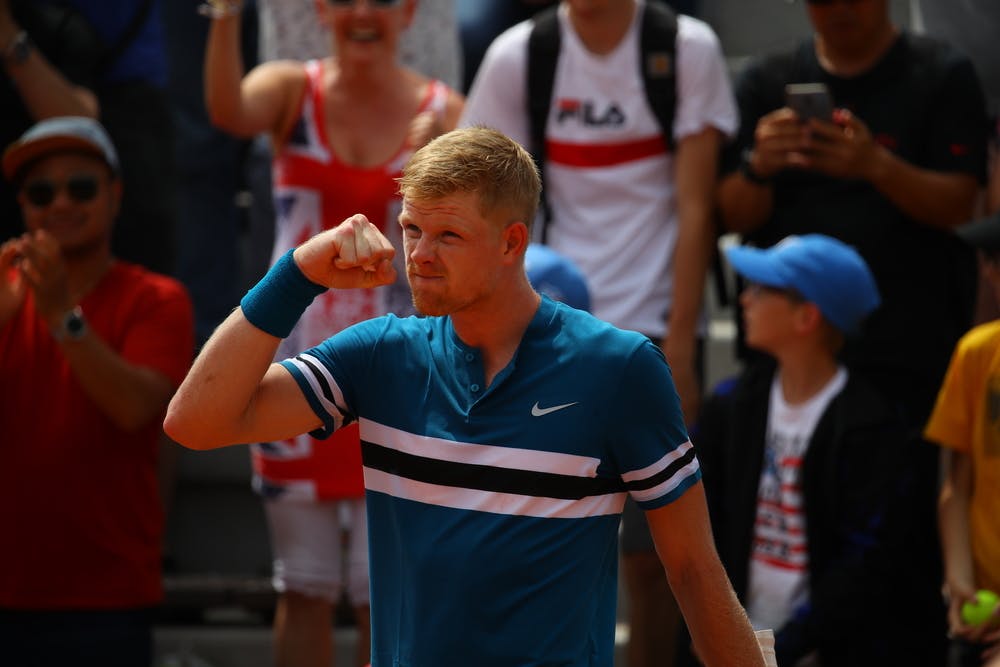Read more
Edmund fends off Aussie assault

The Brit has become his nation's top-ranked player after a stellar six months, and thrives on the red clay.

After two rounds at Roland-Garros 2018, there were seven French players left in the men's and women's singles draws. There were six Germans, six Spaniards, five Americans, four Czechs and a couple of Australians. But there was just one Briton – and for the third Grand Slam in succession, Kyle Edmund finds himself alone flying the Union flag in the third round.
Not that thoughts of carrying the hopes of a nation weigh heavily on the shoulders of the fair-haired 23-year-old. Having found his feet on the ATP Tour in Andy Murray’s heyday, Edmund now finds himself installed as the British No.1 – a position he may have inherited in the three-time major winner’s extended absence, but one he fully deserves given his exploits over the past six months.
Injury ended his run in the third round at last year’s US Open, but Edmund proved what a threat he can be at the Australian Open in January, where he surged to the semi-finals with wins over Kevin Anderson and Grigor Dimitrov before losing to Marin Cilic. That run was coupled with a solid clay-court season that included his maiden ATP final in Marrakech and a first Masters 1000 quarter-final appearance in Madrid, where he beat Novak Djokovic and David Goffin before hitting a career-high No.17 in the rankings.
Edmund is that rarest of British talents: one that looks remarkably comfortable on clay. There, he has time to load up and unleash his missile of a forehand behind that heavy serve – a potent one-two punch on the terre battue.
It is a game plan that has returned him to the third round in Paris for a second successive year, where he faces Fabio Fognini (one of four Italians to reach the third round). Edmund has dropped just one set in his two matches – oddly, a 1-6 second set after closing out a 6-0 opener against Marton Fucsovics.
“When I’m playing at my best it’s very good, but I can’t play like that the whole time,” Edmund admitted. “When I’m not playing my best, I have to find a way to win. This year I’ve done that a lot better.
“You get a little bit more confident with a year’s more experience on the tour, playing all the top tournaments – a little bit more comfortable with your surroundings, a little bit smarter on court. You learn more about yourself off the court, and on the court as well.”
That confidence is hard-earned with the help of coach Fredrik Rosengren, who has overseen the honing of Edmund’s key weapons since late 2017. Take the serve: a higher ball toss in 2018 allows him to load more tension into his legs and power up towards the point of contact. But more than the mechanics of Edmund’s game, Rosengren has worked on his mindset, twinning a winner’s mentality with his early-strike style.
“We have talked a lot about this: to play to win, not to play to avoid losing, to have the heart,” Rosengren told The Independent in January. “You will not win every time, but you have to go out there and get it because these guys will not give it to you to free.”
Fognini is certainly not one for charity. In some respects he represents Edmund’s antithesis: never one to hide his emotions on court, the 31-year-old is a more traditional clay-court exponent who reached the quarter-finals here in 2011, his best run at a major.
“Probably his strongest surface is clay – he's obviously beaten Rafa, a few times,” Edmund said of Fognini. “In terms of his game style, he likes to build points. He likes to have time behind the baseline, doesn’t hug it too much. He plays with a lot of shape and spin, and when the ball is short he moves up. I think he has pretty easy power on the clay.
"It will be one of those matches where you do the problem-solving on the court.”